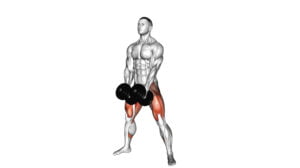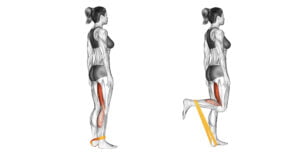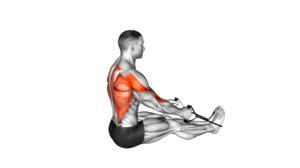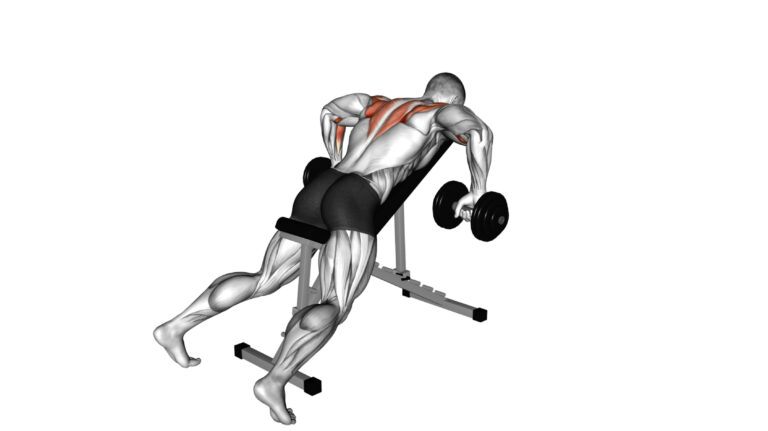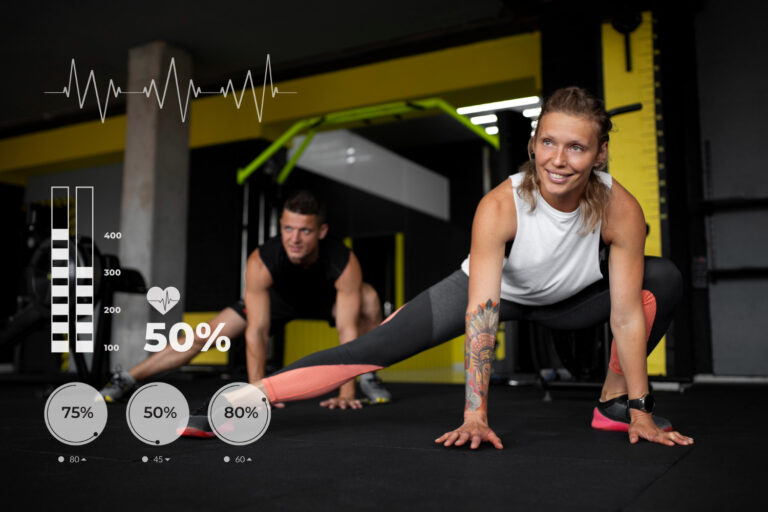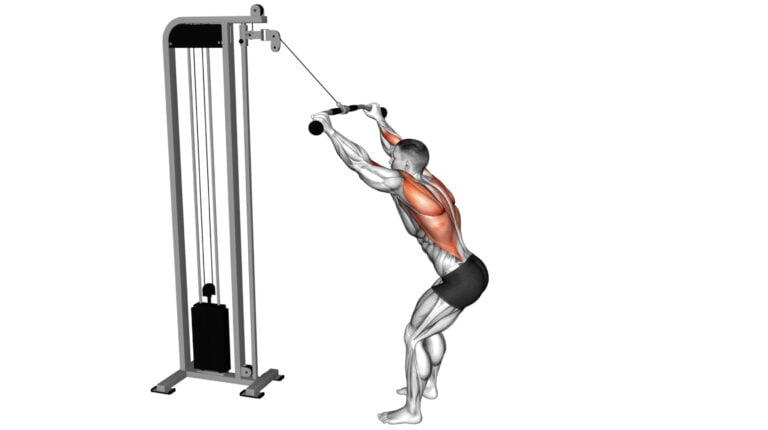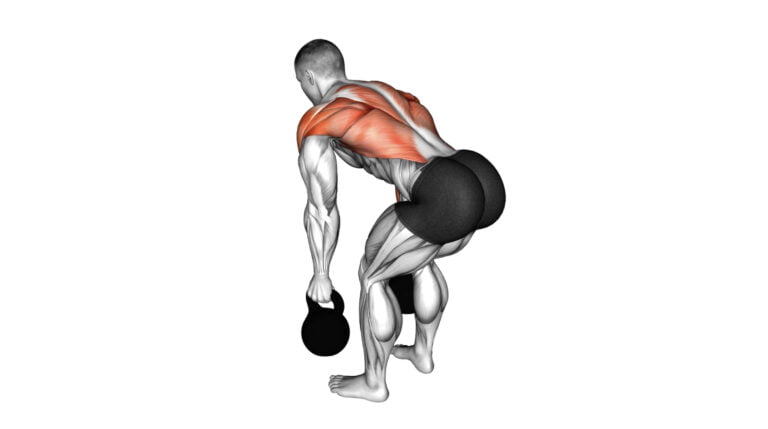5 Effective Quadricep Exercises With Resistance Bands For Stronger Legs
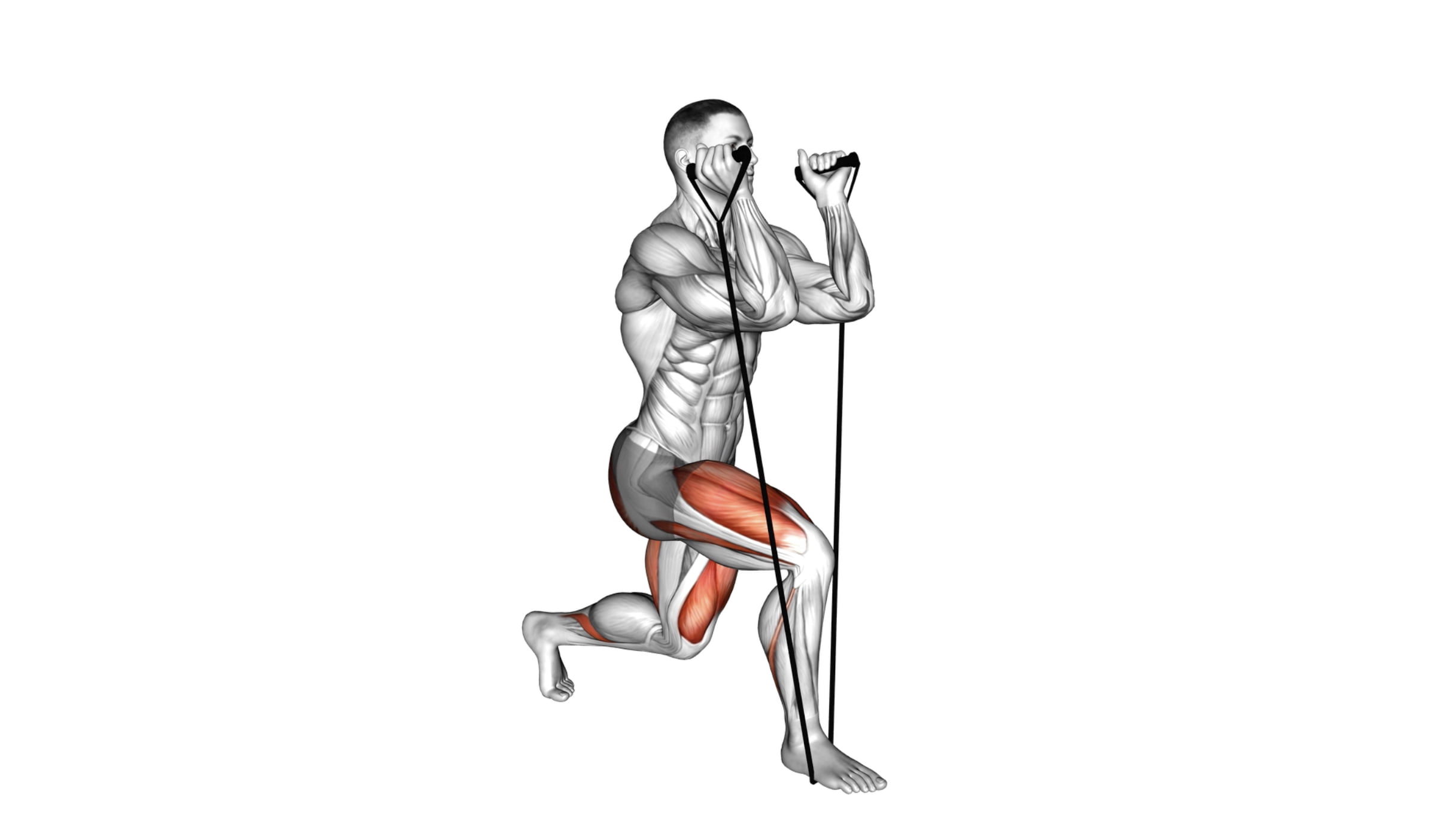
Strengthening your legs doesn’t always require heavy weights or a trip to the gym. Resistance bands offer a versatile, space-saving alternative that can significantly boost lower body strength and reshape your quads.
As an experienced fitness coach with years of helping clients tone their thigh muscles, I’ve seen firsthand the transformative power of quadricep exercises with resistance bands.
Resistance band training is not just about convenience; it’s also about effectiveness. These elastic wonders provide constant muscle engagement and can be adjusted for all fitness levels, making them indispensable tools for sculpting powerful legs at home or on-the-go.
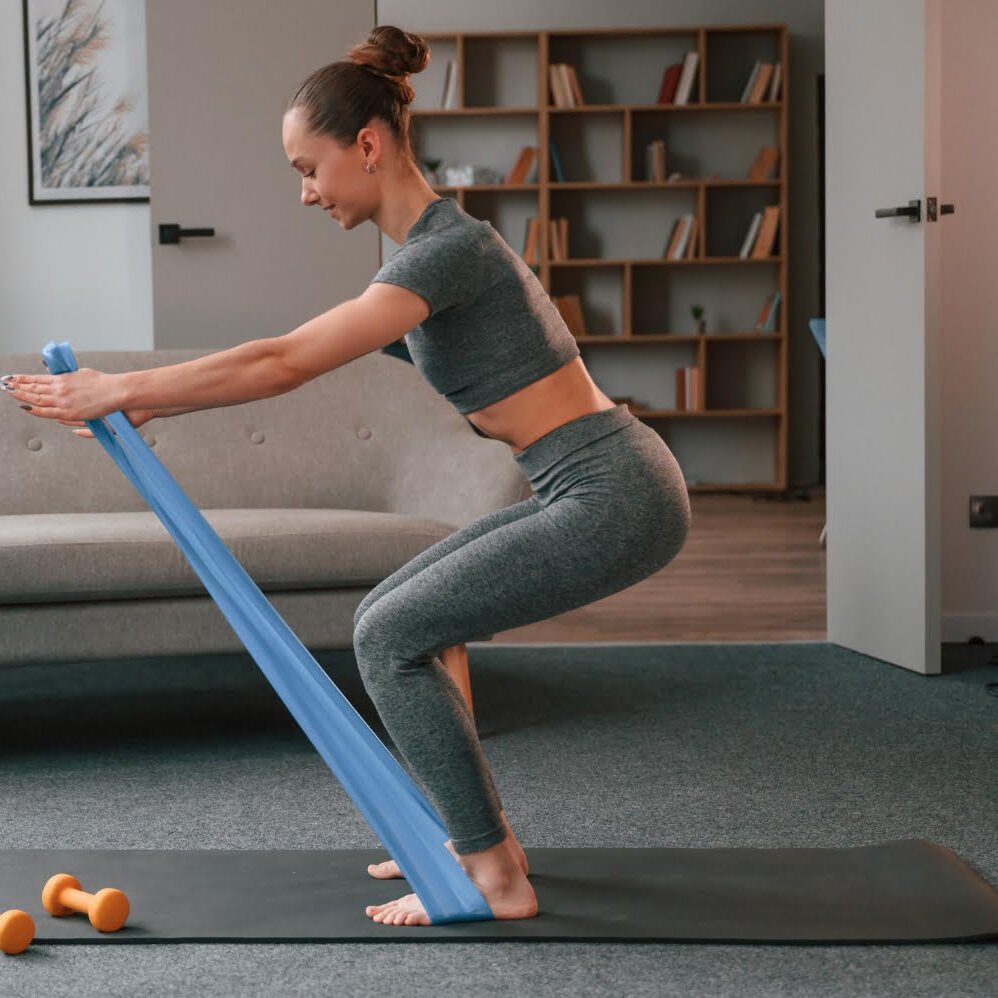
Whether you’re looking to enhance athletic performance or simply aiming for shapely thighs, this article will delve into five potent exercises tailored for peak quad development. Ready to challenge your quads? Let’s dive in!
Key Takeaways
- Resistance bands provide a practical way to build quadriceps strength, offering variety and constant muscle engagement for users of all fitness levels.
- Starting with light resistance is key to mastering form; as strength improves, users should gradually increase resistance to enhance muscle growth and leg strength.
- Quadricep exercises like seated leg extensions, split squats, squats with bands, thrusters, and lateral walks target different muscles for a full lower body workout that improves stability and balance.
- A proper warm-up before exercising and cool down afterward are essential parts of the routine to prevent injury while improving flexibility and post-workout recovery.
- Consulting a trainer can be beneficial in ensuring correct technique during exercise execution with resistance bands for effective strengthening of the legs.
Benefits of Quadricep Exercises With Resistance Bands
Quadricep exercises with resistance bands offer numerous benefits, including strength and muscle building, improved lower body strength, increased stability, and balance. These exercises also help in targeting specific muscles in the quadriceps for better overall leg development.
Strength and muscle building
Resistance band exercises for the quadriceps don’t just sculpt your legs; they pack on real power. Incorporating these bands into leg workouts applies consistent tension to your muscles, challenging them more effectively than many free-weight exercises.
This constant strain triggers muscle growth through a process called hypertrophy, which is great news if you’re aiming to enhance both the size and strength of your lower extremities.
By engaging in routines such as resistance band seated leg extensions or lateral walks, not only do you target the quad muscles like the rectus femoris and vastus medialis, but you also activate supporting muscle groups.
These additional muscles include the hamstrings, glutes, and core—all essential for a well-rounded lower body development that supports knee joints and improves overall balance during physical activities.
With every squat position held or lunge performed with resistance bands, expect an uptick in muscular endurance and functional strength that translates into everyday movements or sports performance.
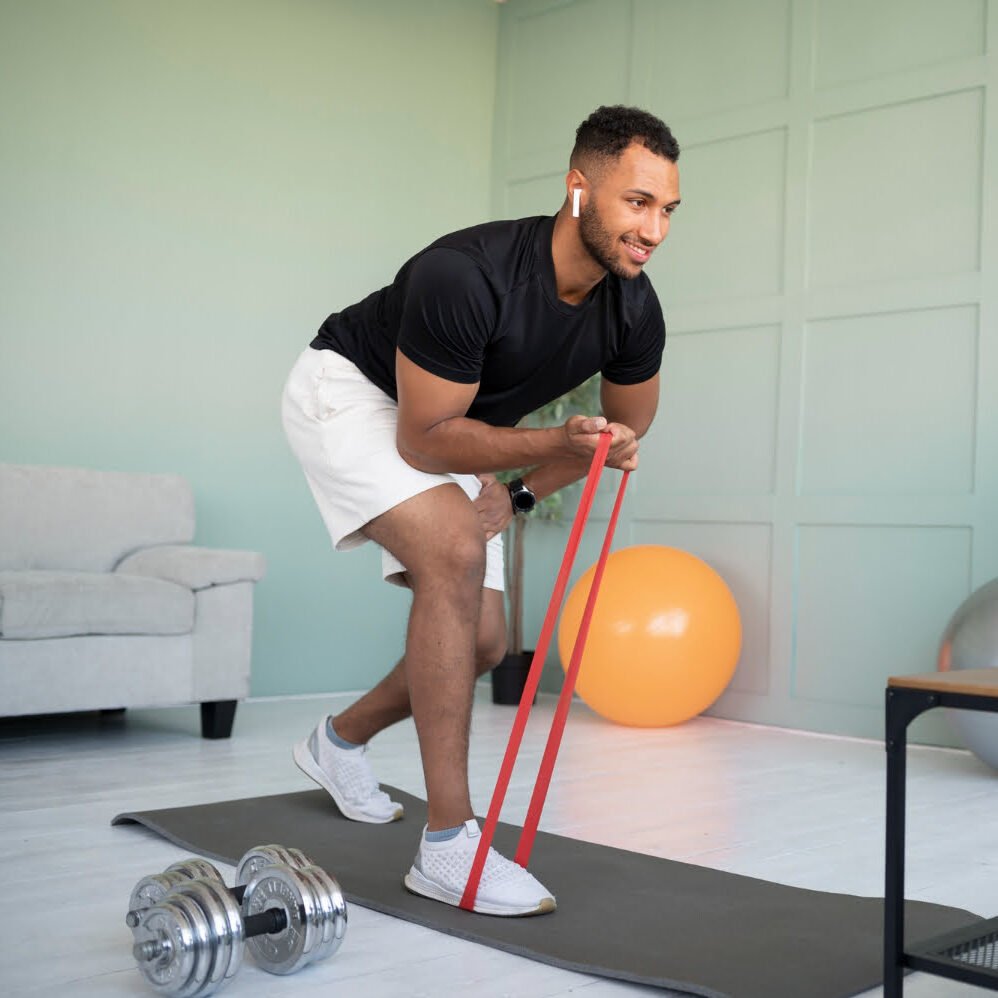
Improved lower body strength
Building up your lower body strength doesn’t just boost your ability to perform everyday activities like walking and standing; it also sets a solid foundation for high-intensity sports and workouts.
Quadricep exercises with resistance bands are especially effective in this regard, targeting crucial muscles that play a pivotal role in knee movement and stability. Just imagine the power in your legs as you engage in exercises such as seated leg extensions or split squats—your quadriceps working hard against the steady pull of the band, growing stronger with each rep.
This kind of training goes beyond muscle building; it fortifies the joints, reducing the risk of injuries often associated with weak thighs and knees. Athletes find these exercises particularly beneficial as they strive for better performance on the field—strong quadriceps correlate to faster sprints and higher jumps.
Regularly incorporating movements like resistance band lateral walks can enhance both muscle endurance and coordination, making you unstoppable whether you’re scoring goals on the soccer field or simply climbing stairs effortlessly day after day.
Increased stability and balance
Boosting lower body strength with quadricep exercises using resistance bands sets the stage for enhanced stability and balance. These gains are particularly vital in daily activities that require standing, walking, or running.
Regularly performing movements like split squats and lateral walks strengthens the muscles around your knees and hips, fortifying your base of support. This muscular reinforcement can lead to better posture and coordination, making you less prone to falls.
Having a strong set of quads also translates into improved athletic performance across various sports. Whether it’s football where rapid changes in direction are key or basketball where vertical jumps are frequent, well-conditioned legs provide the foundation for these dynamic movements.
Training with resistance bands offers consistent tension during exercises, which challenges your muscles and proprioceptive abilities – crucial factors for increasing overall leg stability and refining balance control over time.
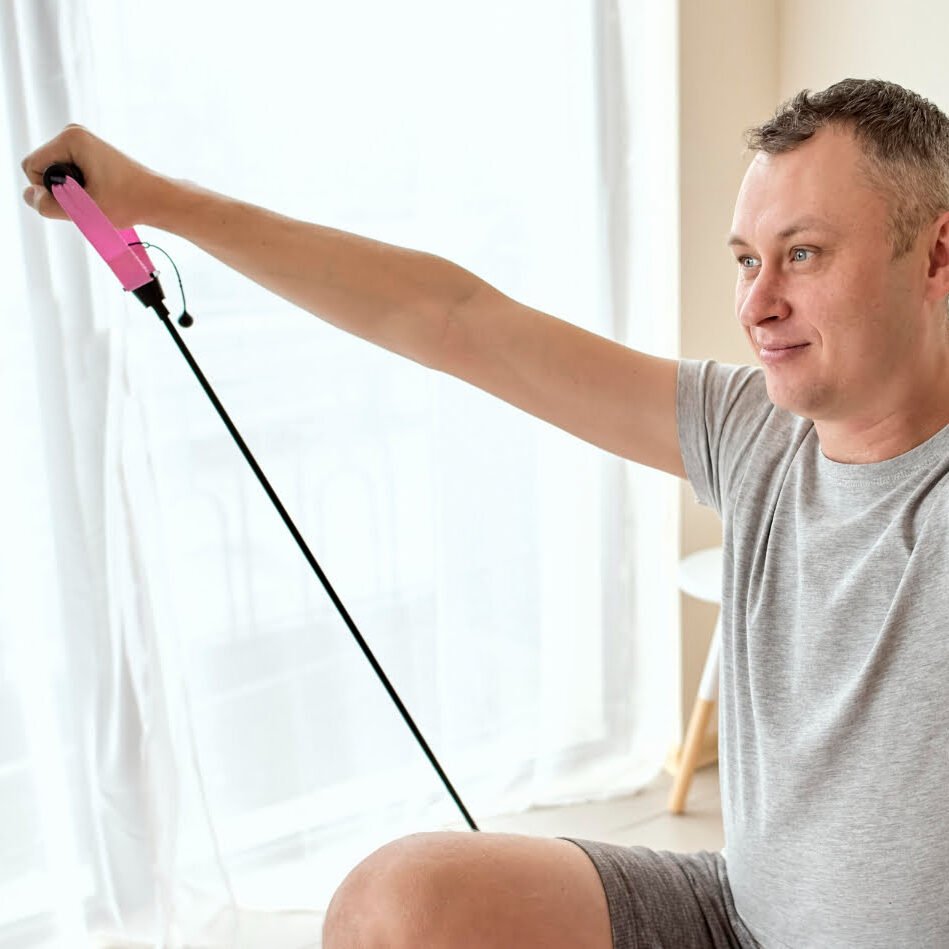
How to Choose the Right Resistance Band
When choosing the right resistance band for your quadricep exercises, consider your fitness level, the resistance level needed, and the quality and durability of the band. It’s important to select a band that will challenge your muscles without causing injury or strain.
Consider your fitness level
Assess your current fitness level before selecting the appropriate resistance band for quadricep exercises. Different bands offer varying levels of resistance, so be sure to choose the one that aligns with your strength and capabilities.
Beginners should start with a lighter resistance band to prevent injury, while more advanced individuals may require medium to heavy resistance for effective quadricep strengthening.
Always maintain proper form and technique during exercises to minimize strain or injury, regardless of your fitness level. Consulting a fitness professional can help determine which band and exercises best suit your individual fitness goals and abilities.
Determine the resistance level needed
When determining the resistance level needed for quadricep exercises with resistance bands, it’s essential to consider your current strength and experience. Start with a lower resistance band that allows you to perform each exercise with proper form and gradually increase as needed.
For example, when doing the Resistance Band Seated Leg Extension, choose a band that challenges your quadriceps without causing discomfort or strain. Similarly, use a resistant band for the Resistance Band Split Squat that lets you maintain proper form while feeling the burn in your quadriceps.
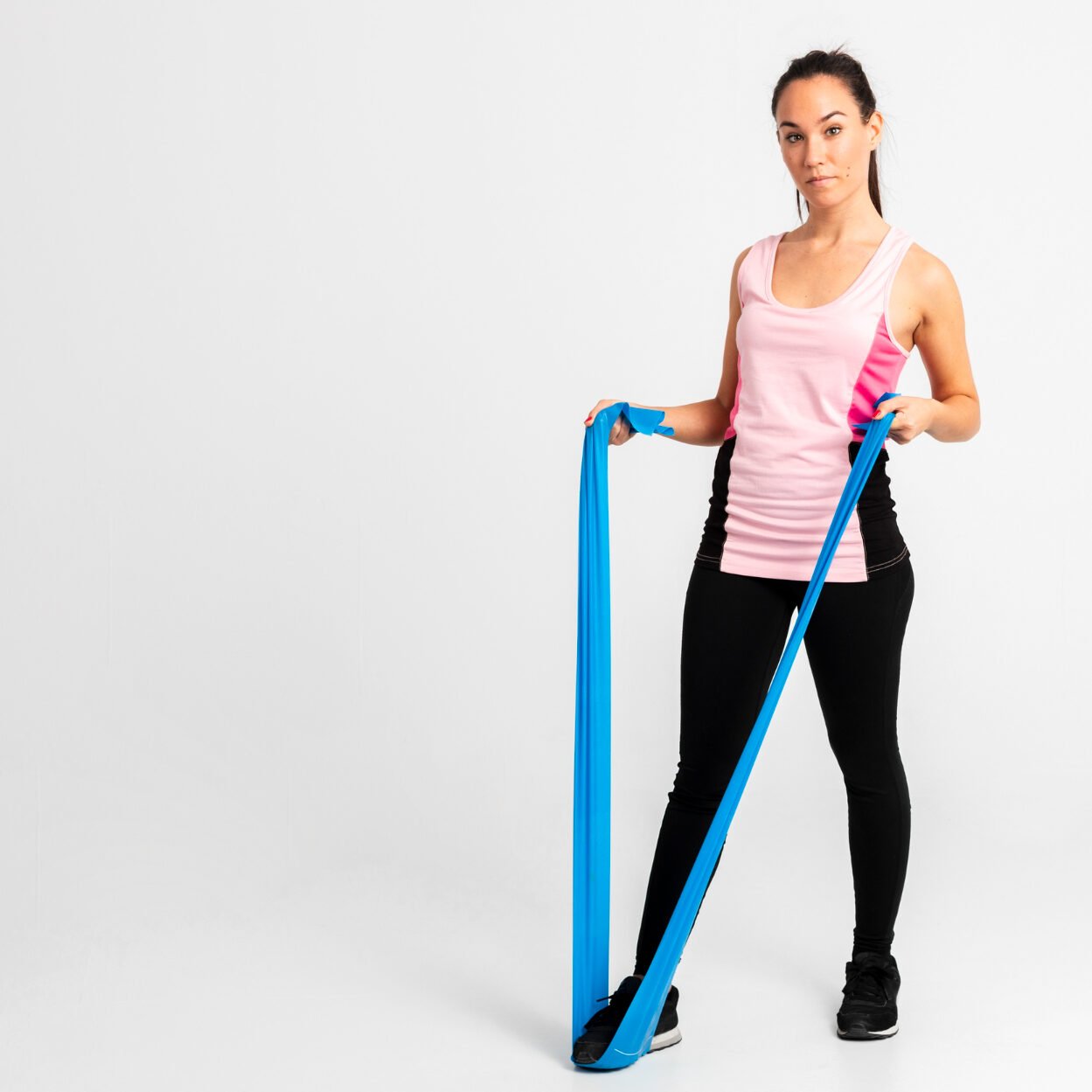
As for the Resistance Band Squat, opt for a band providing enough tension to make the exercise challenging without compromising your form. When performing exercises like the Resistance Band Thruster and Lateral Walk, select a resistance band that effectively targets your quadriceps and helps strengthen your legs without risking injury and discomfort.
Check for quality and durability
After determining the resistance level needed, it is crucial to check for quality and durability when choosing a resistance band. Look for high-quality materials such as latex or rubber, which are more durable and less likely to snap during use.
Ensure that the resistance band has strong and secure handles or loops to provide a comfortable and safe grip during exercises. Regularly inspect your resistance band for signs of wear and tear, and replace it if any damage is noticed to prevent accidents during workouts.
When selecting a resistance band, consider the type of exercises you will be doing, as this will help determine the most suitable band for those movements. Also essential while checking for quality and durability is ensuring that the chosen band meets your current fitness level, goals, and exercise requirements from an expert’s perspective.
5 Effective Quadricep Exercises With Resistance Bands
Discover these powerful exercises that will help you strengthen and tone your quadriceps using resistance bands, for a more effective lower body workout. Ready to take your leg workout to the next level? Read on to find out how!
1. Resistance Band Seated Leg Extension
To perform the Resistance Band Seated Leg Extension, sit on a chair with your back straight and feet flat on the floor. Secure one end of the resistance band under the chair’s leg, then loop the other end around your ankle.
Extend your lower leg against the resistance to engage and strengthen your quadriceps.
By doing this exercise, you specifically target your quadriceps without putting stress on your knee-joint. You can easily adjust the intensity by using different resistance bands or adjusting the length of the band for varied levels of challenge.
2. Resistance Band Split Squat
The resistance band split squat is a powerful exercise that targets the quadriceps, hamstrings, and glutes. To perform this movement, stand with one foot in front of the other and place the middle of a resistance band under your front foot.
Hold the ends of the band at shoulder height with arms bent. Lower into a lunge position, keeping your back straight and chest up. Push through the front heel to return to standing position.
This exercise helps to build lower body strength and improve stability.
3. Resistance Band Squat
The resistance band squat is an excellent exercise for targeting the quadriceps. This movement not only adds variety to your lower body workout but also helps in building strength and stability in the legs.
By incorporating resistance bands into your squats, you can effectively challenge your muscles and enhance overall lower body strength.
Performing resistance band squats regularly can lead to improved quadricep muscle endurance, making it an essential addition to any resistance band workout routine. This exercise specifically targets the quadriceps, providing a full range of motion that activates these muscles effectively.
4. Resistance Band Thruster
After mastering the Resistance Band Squat, it’s time to level up with the resistance band thruster. This dynamic exercise provides an intense workout for your quadriceps, engaging multiple muscle groups simultaneously.
By incorporating resistance bands into this compound movement, you increase tension throughout the entire range of motion, leading to stronger and more defined leg muscles.
Engage your quadriceps along with your glutes and core as you perform the resistance band thruster. Start by standing on the resistance band with feet shoulder-width apart, holding each end of the band at shoulder height.
5. Resistance Band Lateral Walk
The resistance band lateral walk is a great exercise for targeting the quadriceps, hip abductor, and adductor muscles. By using a resistance band, you can effectively strengthen your leg muscles while also enhancing stability in your lower body.
This exercise provides an excellent way to complement other resistance band exercises for overall leg strength and improved balance.
Tips for Performing Quadricep Exercises With Resistance Bands
Start with light resistance and focus on proper form to maximize the effectiveness of these exercises – read more to discover how you can strengthen your quadriceps with resistance bands!
Start with light resistance
Ease into your quadricep exercises with resistance bands by beginning with light resistance. This approach helps minimize the risk of injury and allows for a gradual adaptation to the exercises.
By starting with lighter resistance, you can focus on perfecting your form and technique, laying a strong foundation for future progression.
Gradually increasing the intensity as your strength improves will ensure a safe and effective workout. This method supports muscle development while reducing the likelihood of strain or overexertion.
Focus on proper form
Maintain a straight back and engage your core during resistance band seated leg extensions. Ensure that the front knee doesn’t extend past the toes and keep the back knee in line with the hip during resistance band split squats.
Keep your chest up and knees behind your toes during resistance band squats, maintaining a neutral spine and pushing through your heels for resistance band thrusters.
Always focus on achieving proper form to maximize effectiveness while minimizing the risk of injury. These small adjustments can make a big difference in targeting your quadriceps effectively and safely during resistance band exercises.
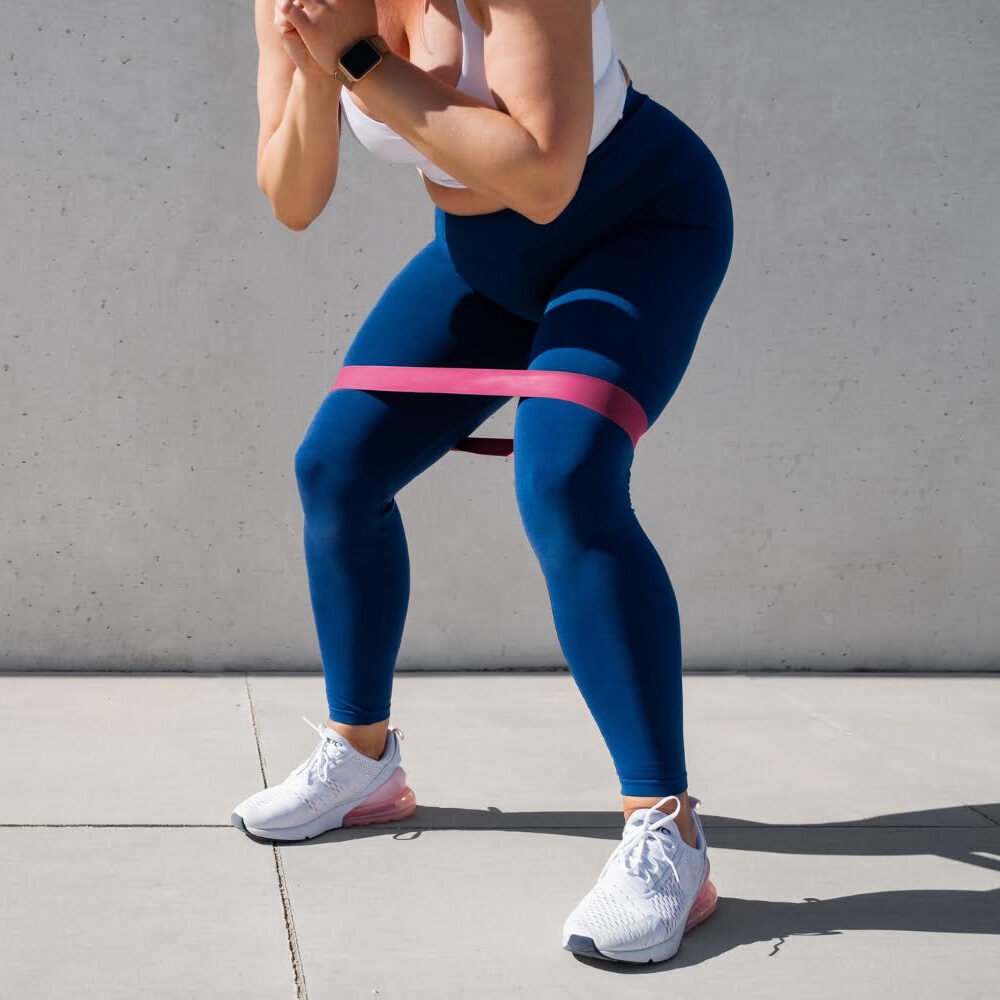
Increase resistance gradually
Once you’ve mastered the proper form for each exercise, it’s time to focus on gradually increasing the resistance with your bands. By doing so, you’ll continuously challenge and strengthen your quadriceps muscles, leading to greater muscle growth and overall strength in your legs.
Whether you’re performing seated leg extensions, split squats, or squats with resistance bands, progressively adding more resistance will help take your lower body workout to the next level.
Remember to push yourself just enough to feel an increased challenge without sacrificing your form or risking injury. Embrace the journey of gradual progression as you build up the strength of your quadriceps over time.
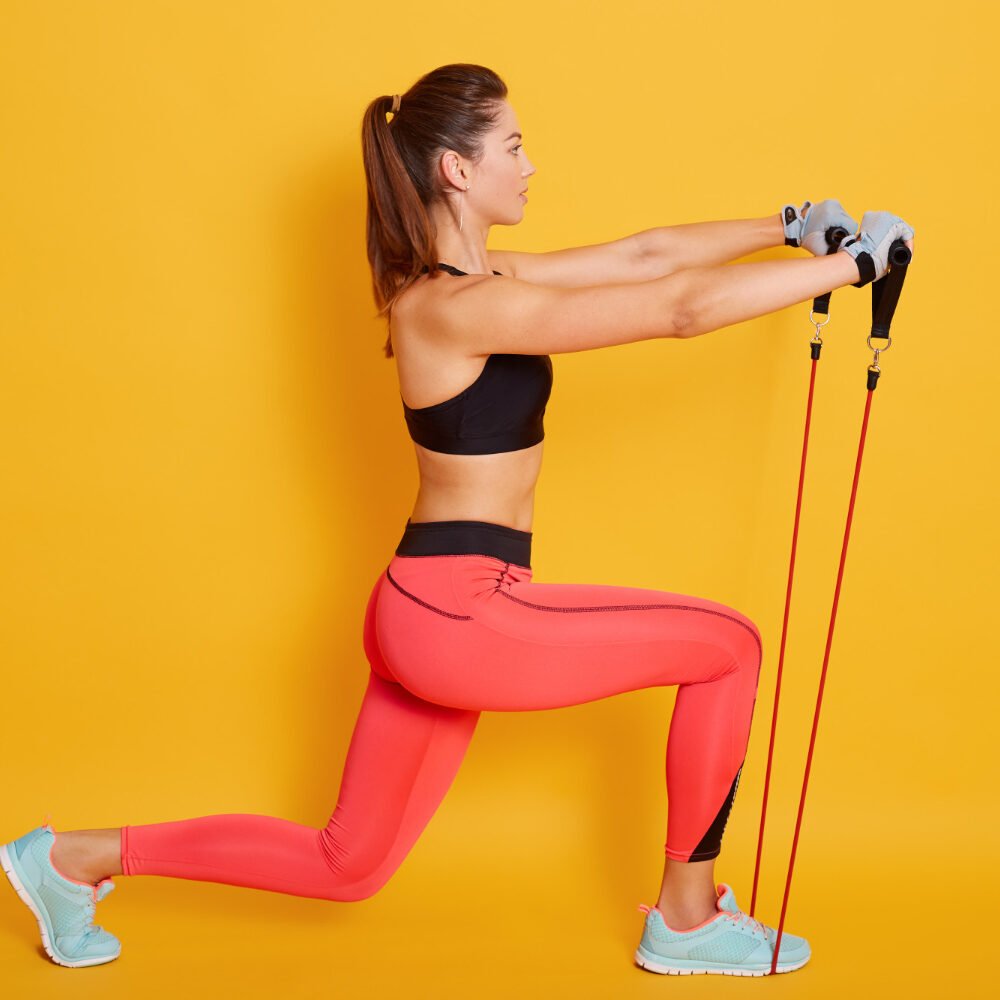
Include variations for a full lower body workout
To ensure a comprehensive lower body workout, integrate variations into your routine. Incorporating different resistance band exercises will target various muscles in the legs and glutes, promoting overall strength and stability.
Try adding movements like lateral walks, split squats, seated leg extensions, thrusters, and traditional squats to engage multiple muscle groups effectively.
By including these diverse exercises in your workout regimen, you can enhance your quadriceps’ development while also strengthening the surrounding muscles for balanced lower body strength.
Always warm up and cool down properly
Before diving into the quadricep exercises with resistance bands, it’s crucial to prioritize a proper warm-up and cool down routine. This not only helps prevent injury but also enhances muscle flexibility and overall performance.
Incorporate dynamic stretching, light cardio, and mobility exercises for warming up, preparing your muscles for the upcoming workout. After exercising, engage in static stretching, foam rolling, and gentle movements to aid muscle relaxation and recovery.
These routines contribute to improved circulation, reduced post-workout soreness, and a safer exercise experience. It’s essential to tailor these routines based on individual needs and fitness levels.
Properly warming up before engaging in quadricep exercises with resistance bands is essential for preventing injuries while improving muscle flexibility. Similarly, cooling down after workouts aids in muscle relaxation and recovery by incorporating static stretching, foam rolling, and gentle movements.
Consult a trainer for proper technique
To ensure proper technique and form when performing quadricep exercises with resistance bands, it is important to consult a trainer. They can provide guidance on positioning the resistance bands and executing the exercises with correct form.
A trainer’s personalized tips and modifications tailored to individual fitness levels and goals can help prevent common mistakes and maximize effectiveness, ultimately targeting the quadriceps more effectively during the exercises.
Additionally, seeking guidance from a trainer can help individuals avoid injury while achieving stronger, more toned legs through using resistance bands for quadricep exercises.
Conclusion

Incorporate these 5 effective quadricep exercises with resistance bands into your workout routine for stronger legs. Enhance lower body strength, stability, and athletic performance through these practical and efficient exercises.
How can you modify the variations to match your fitness level and needs? Apply these strategies wherever you are – at home or on the go – for a convenient workout. Transform your leg workouts with resistance band exercises and experience significant improvements in muscle strength and overall well-being.
FAQs
1. Why are resistance band exercises good for strengthening quadriceps?
Resistance bands provide progressive overload, which strengthens the quadriceps femoris muscle by increasing tension during exercises like squats and leg presses, without adding joint strain.
2. Can I do these quad exercises at home or do I need a weight room?
You can easily perform these quad-strengthening resistance band exercises at home as they don’t require free weights or machines like those found in a typical weight room.
3. What kind of resistance band exercises can help with knee pain?
Exercises such as partial squats and sissy squats focus on building strength in your quads and gluteus muscles, which support the kneecap and may alleviate knee pains when performed with correct form.
4. Do quadricep workouts also strengthen other parts of my legs?
Absolutely! Quadricep workouts target the vastus lateralis and intermedius muscles but also engage the calves, adductors, abductors, and even core strength for overall lower body development.
5. Are there specific resistance band exercises to improve sports performance?
Yes! Exercises such as box squats emphasize power in the rectus femoris muscle while deadlifts with bands work both lower back and buttocks for improved athletic function across various sports activities.
6. How do I avoid injuries when working out my quads using resistance bands?
Ensure proper form when performing movements like deep squatting position; never rush through reps. Also start with lighter tension bands before gradually escalating difficulty to prevent sports injuries or conditions like patellar tendonitis.

Author
Years ago, the spark of my life’s passion ignited in my mind the moment I stepped into the local gym for the first time. The inaugural bead of perspiration, the initial endeavor, the very first surge of endorphins, and a sense of pride that washed over me post-workout marked the beginning of my deep-seated interest in strength sports, fitness, and sports nutrition. This very curiosity blossomed rapidly into a profound fascination, propelling me to earn a Master’s degree in Physical Education from the Academy of Physical Education in Krakow, followed by a Sports Manager diploma from the Jagiellonian University. My journey of growth led me to gain more specialized qualifications, such as being a certified personal trainer with a focus on sports dietetics, a lifeguard, and an instructor for wellness and corrective gymnastics. Theoretical knowledge paired seamlessly with practical experience, reinforcing my belief that the transformation of individuals under my guidance was also a reflection of my personal growth. This belief holds true even today. Each day, I strive to push the boundaries and explore new realms. These realms gently elevate me to greater heights. The unique combination of passion for my field and the continuous quest for growth fuels my drive to break new ground.





